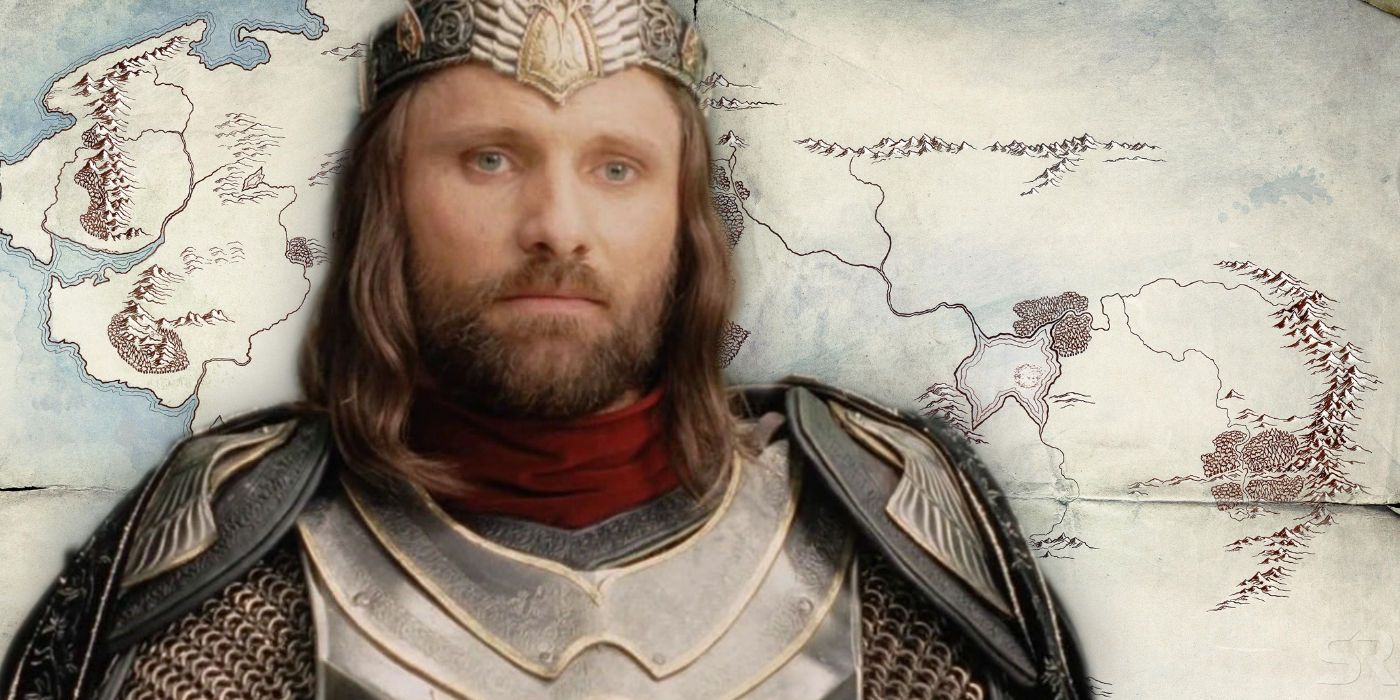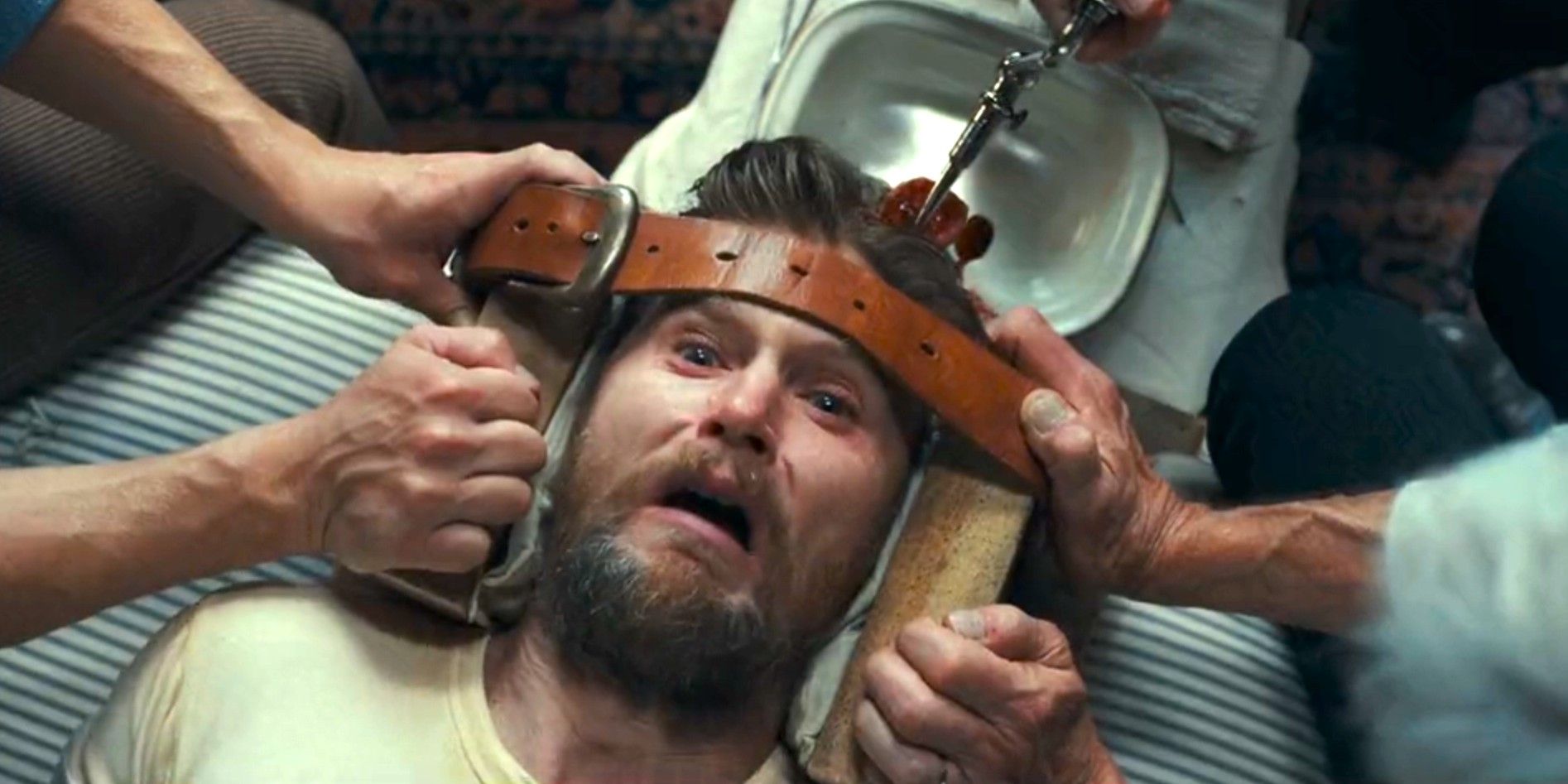Lord of the Rings: What Happened AFTER The Ending
Summary The Fourth Age of Middle-earth begins immediately after The Lord of the Rings trilogy, but there are fewer details about what happens after Aragorn's crowning and Frodo's departure.
Aragorn becomes the King of Gondor and rebuilds Arnor, uniting the two kingdoms to create the Reunited Kingdom. He takes on the title of High King and leads the Reunited Kingdom in retaking their previously occupied lands.
The departure of the Elves for the Undying Lands marks the dawn of the Fourth Age, characterized by the Dominion of Men. The Dwarves also begin to die off, leaving humanity as the most important race in Middle-earth. The Shire becomes a sanctuary for Hobbits, with Aragorn banning humans from visiting to ensure the Hobbits' peaceful existence.
The Return of the King gives an epic conclusion to the trilogy, but what happens after The Lord of the Rings is something many fans have speculated over for decades. After stealing the One Ring and fighting with Frodo (Elijah Wood), Gollum (Andy Serkis) plunged into the fiery pits, and the One Ring was finally destroyed. The destruction of the Ring triggered the death of Sauron. Mordor collapsed, and the war was finally over. Aragorn (Viggo Mortensen) becomes the King of Gondor. While peace seems to have returned, there is still some question about what comes next.
The Lord of the Rings trilogy takes place at the end of the Third Age of Middle-earth, with the Fourth beginning immediately afterward. There have been multiple films and books depicting what happened before the Lord of the Rings trilogy, including The Hobbit, reference books and appendices written by Tolkien, and Amazon's Rings of Power series set during the Second Age. However, there are fewer hints about what happened next, but that doesn't mean Tolkien didn't get readers some idea of what happens after Lord of the Rings and the events of the Fourth Age of Middle-earth.
Related Lord Of The Rings' Second Age Explained Entirely Long before Frodo and Bilbo's adventures in the Third Age, the Lord of the Rings' Second Age happened, filled with wicked wars and seismic shifts.
What Happened Immediately After Return Of The King (And Why Not Much Of It Is Known)
The Post-Return Of The King Period Became The Fourth Age
Thanks to Tolkien's literary works, some light has been shed on the future of Middle-earth after The Return of the King. The Lord of the Rings has an almost fairytale ending, making a refreshing break from bleak modern fantasies like Game of Thrones. Sauron's defeat allowed for a happy ending for the surviving members of the Fellowship of the Ring as they moved on with their lives. Frodo and Sam (Sean Astin) returned to the Shire at last, and Sam started a family.
This period of Middle-earth's timeline, unlike its pre-Lord of the Rings history, isn't covered in great detail.
Some of this is depicted in The Return of the King and more is covered in the extended editions. What most viewers know is that Frodo wasn't content with his life in the Shire, due in part to injuries he sustained in The Lord of the Rings. As seen at the end of Return of the King, Frodo left Middle-earth for the Undying Lands.
Meanwhile, also seen in the movie adaptation, Aragorn took his rightful place as the King of Gondor. He married the Elf, Arwen (Liv Tyler), who willingly gave up her Elven immortality in order to share a life with Aragorn. Aragorn lived a long, full life with Arwen for many years after The Lord of the Rings, and passed away at the age of 210.
Your browser does not support the video tag.
Most of these events took place in an era known as the Third Age. The timeline of Middle-earth is broken up into several long eras, and the Third Age is just one of them. The Second Age is the focus of Amazon's Lord of the Rings TV series, The Rings of Power. Tolkien wrote a surprisingly large amount about The Second Age in his appendices and books like The Silmarillion.
The Third Age, which lasted for a period of 3021 years, is the setting for both The Hobbit and The Lord of the Rings trilogies. Shortly after the conclusion of The Return of the King, the Fourth Age of Middle-earth began. This period of Middle-earth's timeline, unlike its pre-Lord of the Rings history, isn't covered in great detail. There are, however, a few confirmed details.
Related Tolkien's 10 Biggest Battles That Happened Before Lord Of The Rings The Lord of the Rings movies are known for their epic battles, but they are nothing compared to the battles Tolkien described to have come before.
Aragorn Created the Reunited Kingdom
The Time Of Men Is Restored
Close
For Aragorn, life after Sauron's defeat was about returning the Kingdoms of Men to their former glory. Located in the north, Arnor was a prominent kingdom in the Second Age of Middle-earth. Populated by Elves, Hobbits, and Men, Arnor thrived for centuries but in the early part of the Third Age, Arnor was no longer such a prosperous place. Political unrest and deceit divided the kingdom into three smaller kingdoms, and over time, civil war brought them to their knees.
Under Aragorn's control, the Reunited Kingdom became the most dominant force in the northwest region of Middle-earth.
There were attempts at reunification. For a time, Gondor and Arnor were one kingdom, but this didn't last. After its fall, what was left of the people of Arnor moved on to other regions. One of the kings of Arnor's descendants is Aragorn. This meant that Aragorn, who was already the King of Gondor, was also entitled to the throne of Arnor.
As a result, a key event that happens after Lord of the Rings is that Aragorn rebuilt Arnor and became its 26th king. This allowed Aragorn to take the High King of Arnor and Gondor position, a title that hadn't been held since Isildur in the Second Age. After centuries of being apart, Aragorn mended the split between Arnor and Gondor and created the Reunited Kingdom.
Under Aragorn's control, the Reunited Kingdom became the most dominant force in the northwest region of Middle-earth. During this time, the Reunited Kingdom set out to retake all the lands that were previously occupied by Arnor and Gondor. Only certain territories were left alone as the Reunited Kingdom fought to take back what once belonged to them.
The Fourth Age & The Dominion of Men Began
Elves Returned To The Undying Lands Following Sauron's Defeat
The Elves were the most prevalent race in the First and Second Ages of Middle-earth. This began to change in the Third Age when the power of the Elves began to wane. In the beginning of the Third Age, the Elves started to leave for their homeland, Valinor, though many of them remained in various regions of Middle-earth. What was next for the Elves and the fate of Middle-earth after Return of the King was teased by Gandalf:
"For the time comes of the Dominion of Men, and the Elder Kindred should fade or depart."
Gandalf's prediction was proven correct when the remaining Elves left Middle-earth for the Undying Lands when the Three Rings lost their power as a result of Sauron's defeat. The departure of the Elves ushered in the dawn of the Fourth Age, which is characterized by the Dominion of Men. Also, the Dwarves began to die off in the Fourth Age, since women only made up a third of their population, and Dwarven females often chose not to marry. So, over time, the Dwarves' contributions to the world were forgotten, leaving humanity as the most important race remaining on the face of Middle-earth.
Related How Old Each Lord of the Rings Fellowship Member Really Is The Fellowship take on an arduous journey in The Lord of the Rings, but how old is each member of the group when first formed at Rivendell?
The Shire Became A Sanctuary For The Hobbits
Aragorn Banned Humans From The Shire
Close
In The Hobbit and The Lord of the Rings, the Shire is the homeland of the Hobbits and a region located in the northwest portion of Middle-earth. The Shire was famously visited by Gandalf and a company of Dwarves in The Hobbit and again by Gandalf in Lord of the Rings. While it is only occupied by Hobbits, it has seen its fair share of visitors over the centuries. Both Elves and Dwarves have been known to pass through.
Aragorn's intention in banning Men from the Shire was to ensure that the Hobbits could live peacefully without intervention from outsiders.
While the Fellowship was off on their adventure, a group of Men called the Ruffians became a threat to the Shire and the Hobbits' way of life. The Ruffians were dealt with once Frodo and the others returned home. Things changed for the Shire-folk when Aragorn — known by the name "King Elisaar" in the Fourth Age of Middle Earth — formed the Reunited Kingdom.
The lands he gained as the High King gave him some level of control over the Shire's fate. Knowing that people like the Ruffians would always be a problem for the Shire, he declared that the Shire was a sanctuary for the Hobbits that should never be visited by Men, including himself. Aragorn's intention in banning Men from the Shire was to ensure that the Hobbits could live peacefully without intervention from outsiders.
Related Why Gandalf Was So Interested In Hobbits In The Lord Of The Rings (Did He Know They'd Be Important?) Gandalf seemed to know that Hobbits would be important in saving Middle-earth, but was this the only reason he befriended them in Lord of the Rings?
What Tolkien Books Are Set After Lord Of The Rings?
The New Shadow Was Tolkien's Intended Follow-Up
While Tolkien wrote several stories and appendices set during or about Lord of the Rings' Fourth Age, there was never a full novel-length sequel to Lord of the Rings. Tolkien started writing a Lord of the Rings sequel in the 1960s, which had the title The New Shadow. It ended up only being nine pages of story though, and they were all published in The Peoples of Middle-earth – the twelfth and final volume in The History of Middle-earth series, featuring unpublished Tolkien appendices, letters, notes, and previously unpublished manuscripts that were collated and published by his son, Christopher Tolkien.
It's from The Peoples of Middle-earth and the extract of The New Shadow that almost all details on the Fourth Age of Middle-earth are drawn. Tolkien abandoned the novel, however, because he found it too bleak a setting. Had it been finished, The New Shadow would have been set a century after the fall of Mordor and would have shown more of the kingdoms of Men and what happens after The Lord of the Rings. For his part, Christopher Tolkien remarked in The Peoples of Middle-earth that the unfinished The New Shadow:
"[The New Shadow] would nonetheless have been a very remarkable ‘thriller’, and one may well view its early abandonment with regret.”
Related Gandalf & Saruman's History (& Rivalry) In Lord Of The Rings Explained The Lord of the Rings picks up thousands of years into Gandalf and Saruman's friendship, but Tolkien's other works outline the path to betrayal.
Will The New Lord Of The Rings Movie Take Place After Return Of The King?
An Animated Adventure Is The Next Continuation Of The Middle-earth Story
Warner Bros. has announced it will be returning to the Lord of the Rings film series with new titles in the future. The first film as a result of this project will be The Lord of the Rings: The War of the Rohirrim, an animated feature directed by anime veteran Kenji Kamiyama and featuring the voices of Brian Cox and Miranda Otto. The War of the Rohirrim will take place 183 years before the events of The Lord of the Rings.
Given the continued popularity of Middle Earth, it seems inevitable that at some point viewers will see an on-screen story of what happens after The Lord of the Rings.
An animated Lord of the Rings movie based on Rohan is a talking point in itself, but many are wondering if a new Lord of the Rings movie could be a sequel set in the Fourth Age of Middle-earth. While few concrete plans for Warner Bros' Lord of the Rings slate have been announced, it would seem as though the franchise continues to plumb Tolkien's writing about the past of Middle-Earth rather than its future.
Creating a movie or series in the Fourth Age of Middle Earth would present many challenges, as it would have to be created from scratch and deal with the fading of many of the magical and fantastical elements from Tolkien's world in favor of a more modern society. However, given the continued popularity of Middle Earth, it seems inevitable that at some point viewers will see an on-screen story of what happens after The Lord of the Rings.
What Happened To Each Of The Main Characters
Frodo
Close
Of all the main characters in the series, what happened to Frodo after Lord of the Rings is perhaps the most well documented, and was even covered in the Peter Jackson movie trilogy. None of the Fellowship suffered during the war against Sauron as much as Frodo, and his time as the Ringbearer took its toll on him both physically and mentally. While it was possible for the likes of Sam, Merry, and Pippin to return to a somewhat normal life, the same wasn't true of the Hobbit who brought the One Ring all the way from The Shire to Mordor.
As such, Frodo was granted an honor that almost none who aren't elves have received in the history of Middle-earth — passage to the Undying Lands. Here Frodo would live a long and peaceful life. While the Undying Lands wouldn't make him immortal, they would give him an extended lifespan, though since Tolkien didn't write much about the Fourth Age it's unknown exactly how old Frodo was by the time he died.
Sam
Close
Samwise Gamgee was the true hero of Lord of the Rings in the eyes of many, as it's all-but-certain that Frodo would never have reached Mordor without him. Tolkien may have recognized this too, as Sam got an incredibly happy ending after the events of The Return of the King. Like Frodo, the final movie in the LotR trilogy showed some of what happened to Sam once he returned to the Shire. Much to the delight of viewers, Sam settled down and married Rosie Cotton, the female Hobbit he'd been in love with for years (as was shown in The Fellowship of the Ring before he and Frodo left the Shire).
Sam would eventually go on to become Mayor of the Shire, and held the office for a total of 49 years.
Sam would eventually go on to become Mayor of the Shire, and held the office for a total of 49 years. He and Rosie also had 13 children, so he spent the latter decades of his life surrounded by a large and loving family. The only sad note in Sam's tale is that he outlived his beloved, though having to live through the loss of Rosie would have been much less painful with his many children there to comfort and console him.
Merry & Pippin
Close
Merry and Pippin were almost inseparable throughout the events of The Lord of the Rings, and during the time the spent apart it was clear they missed each other dearly. Thanks to Tolkien's notes and appendices, it's known that this intensely close friendship continued until they both passed away. Touchingly, they both died together in Gondor around the age of 100, and were buried side-by-side (and, later, Aragorn would also be buried alongside them).
Like Sam, both Merry and Pippin wielded political influence in the Shire after Return of the King. Merry became the Master of Buckland, and Pippin was Thain of the Shire. Thanks to their time with the Ents, they were also notably taller than other Hobbits upon their return. It's known that both Merry and Pippin had at least one son each. Merry married Estella Bolder, while Pippin settled down with Diamond of Long Cleve. While the names of Merry's children were unknown, Pippin named his son Faramir. Faramir went on to Marry Goldilocks Gamgee, one of Sam and Rosie's daughters.
Gimli
Close
Gimli's adventures didn't stop after the destruction of the One Ring and Sauron's defeat. The dwarf had an incredibly emotional journey despite being the comic relief in the movies, such as when he discovered his kin had been wiped out in Moria. Perhaps in response to this, Gimli's next step was to travel to the Glittering Caves of Aglarond beneath Helms Deep, taking many dwarves with him and establishing a new colony there - which also brings him the title of "Lord of the Glittering Caves".
Gimli and his subjects lend their skills with masonry, construction, and metalworking to Aragorn's people.
This dwarven settlement in the Kingdoms of Men brings many benefits to both races, as Gimli and his subjects lend their skills with masonry, construction, and metalworking to Aragorn's people. For example, the broken gate of Minas Tirith is replaced by one of dwarf construction and design, comprised of mithril and steel. Gimli didn't remain in Middle-earth until his death, however. He instead became the first dwarf to travel to the Undying Lands, heading there with his lifelong friend Legolas once Aragorn had passed away.
Legolas
Close
Much like Merry and Pippin, Gimli and Legolas remained dear friends after the events of The Return of the King. Legolas didn't have an eventful a time after the destruction of the One Ring as Gimli did, though he did accomplish a few things before ultimately sailing west to the Undying Lands. Legolas led Gimli through Fangorn Forest to fulfil a promise the two made to one-another at the Battle of Helm's Deep, and then filled his end of the bargain by accompanying Gimli to The Glittering Caves. Once Gimli became lord of the dwarves that settled there, Legolas returned to visit often.
As for his own people, Legolas led a contingency of Silvan Elves (forest or wood-elves) south, where they settled in a region of Gondor. Legolas remained in Gondor (or Ithilien, as the elves called it) for around a century with the elves, finally sailing west with Gimli after the death of Aragorn.
Gandalf
Close
The ending of The Lord of the Rings: Return of the King shows Gandalf sailing west to the Undying Lands with Frodo. While this is true to the books, Tolkien's writing gives a few more details about what Gandalf gets up to in the time between crowing Aragorn as the new King of Gondor and leaving Middle-earth forever with Frodo. There are about two years between both events in the source material, something the final movie in the Lord of the Rings trilogy glosses over.
After spending two years conversing with Tom Bombadil, Gandalf then travels to the Undying Lands with Frodo, Bilbo, Elrond, and Galadriel.
Gandalf travels back to the Shire with Frodo, Sam, Merry, and Pippin after the celebrations in Gondor are done with. However, he leaves them at the border, and then goes on to meet Tom Bombadil, an incredibly powerful individual who was cut from the movies. After spending two years conversing with Tom Bombadil, Gandalf then travels to the Undying Lands with Frodo, Bilbo, Elrond, and Galadriel. It's worth nothing that, once he arrives, Gandalf reverts to a younger version of himself and takes the name Olórin.
Aragorn
Close
As The Return of the King showed, Aragorn is crowned the High King of Arnor and Gondor after the death of Sauron, taking the title King Elessar (Elessar being the name bestowed upon him by Galadriel). He then married Arwen shortly afterward, and the two had a son, Eldarion, as well as an unknown number of unnamed daughters. Aragorn's rule was, as to be expected, one of great prosperity for Gondor, and it's safe to say he laid solid foundations for the Dominon of Men in the Fourth Age of Middle-earth.
Aragorn died of old age, living to be 210. He ruled as king for 122 years, and after he passed, was buried next to Merry and Pippin. Arwen died around the same time, though did slightly outlive Aragorn, as Tolkien wrote that she passed away due to a broken heart. The throne of Gondor was then passed on to Aragorn's son Eldarion in the year 120 of the Fourth Age, over a century after The Lord of the Rings concluded.











COMMENTS